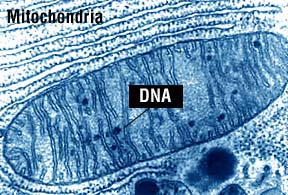
Friday, November 10, 2000

3. Identification
The Central Identification Laboratory (CILHI) identifies an average of one missing soldier a week. The identification process at CILHI is divided into two sections: dental and skeletal. DNA analysis is done in Maryland.
CHECKING THE TEETH
 Odontologists examine and X-ray dental remains and document restorations or unusual characteristics. Findings may be entered into the Computer Assisted Post-Mortem Identification system, a program that contains the dental records of American service personnel whose remains have not been recovered. The search compares recovered teeth against dental records and finds possible matches. Scientists then perform a more detailed comparison on each match.
Odontologists examine and X-ray dental remains and document restorations or unusual characteristics. Findings may be entered into the Computer Assisted Post-Mortem Identification system, a program that contains the dental records of American service personnel whose remains have not been recovered. The search compares recovered teeth against dental records and finds possible matches. Scientists then perform a more detailed comparison on each match.
Factors for detailed tooth comparison:
1. Bone patterns.
2. Root size, shape and angulations.
3. Pulp chamber and root canal shapes.
4. Missing teeth.
5. Crown size, shape and fillings.
EXAMINING THE BONES

Analysis of skeletal remains are conducted by forensic anthropologists. Working blind (with no prior knowledge of the physical characteristics or number of individuals believed to be involved in the case), anthropologists develop biological profiles of the skeletal remains. Profiles include the number of individuals represented, age, race, sex, stature and indication of injuries received before and after death. Once the profile is completed, anthropologists compare these characteristics to the records of missing individuals supplied by the Casualty Data Analysis Section of the operation.
BREAKING THE DNA CODE

Since 1992, CILHI has sent remains to the Armed Forces DNA Identification Laboratory in Rockville, Md., for mitochondrial DNA testing. Lab technicians cut a fragment from a bone and grind it into a fine dust. The dust is placed in a chemical bath that breaks open the bone cells, releasing strands of DNA. The DNA strands are made up of thousands of pairs of nucleotides.

Every person has the same nucleotide pattern as his or her mother and her blood relatives, such as her sister and even her distant cousin. Blood from any of a person's maternal relatives will match the person's blood, thus identifying the remains.
CILHI policy prevents photographs of remains from being published.
All bones and teeth photographed are replicas.
E-mail to City Desk
© 2000 Honolulu Star-Bulletin
https://archives.starbulletin.com


Odontologists examine and X-ray dental remains and document restorations or unusual characteristics. Findings may be entered into the Computer Assisted Post-Mortem Identification system, a program that contains the dental records of American service personnel whose remains have not been recovered. The search compares recovered teeth against dental records and finds possible matches. Scientists then perform a more detailed comparison on each match.


